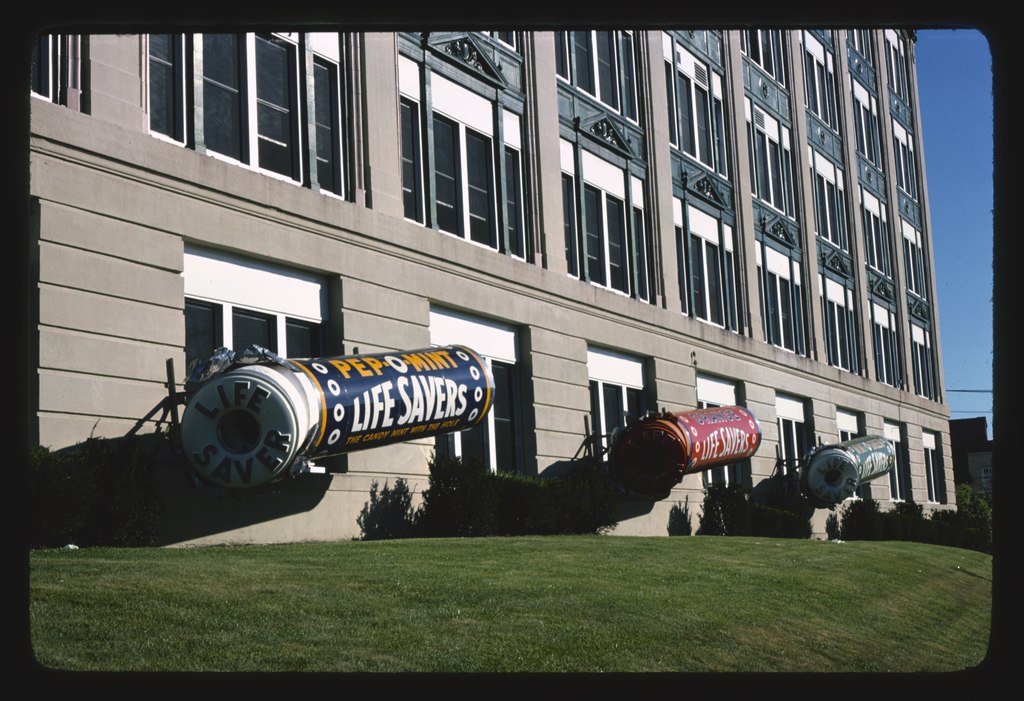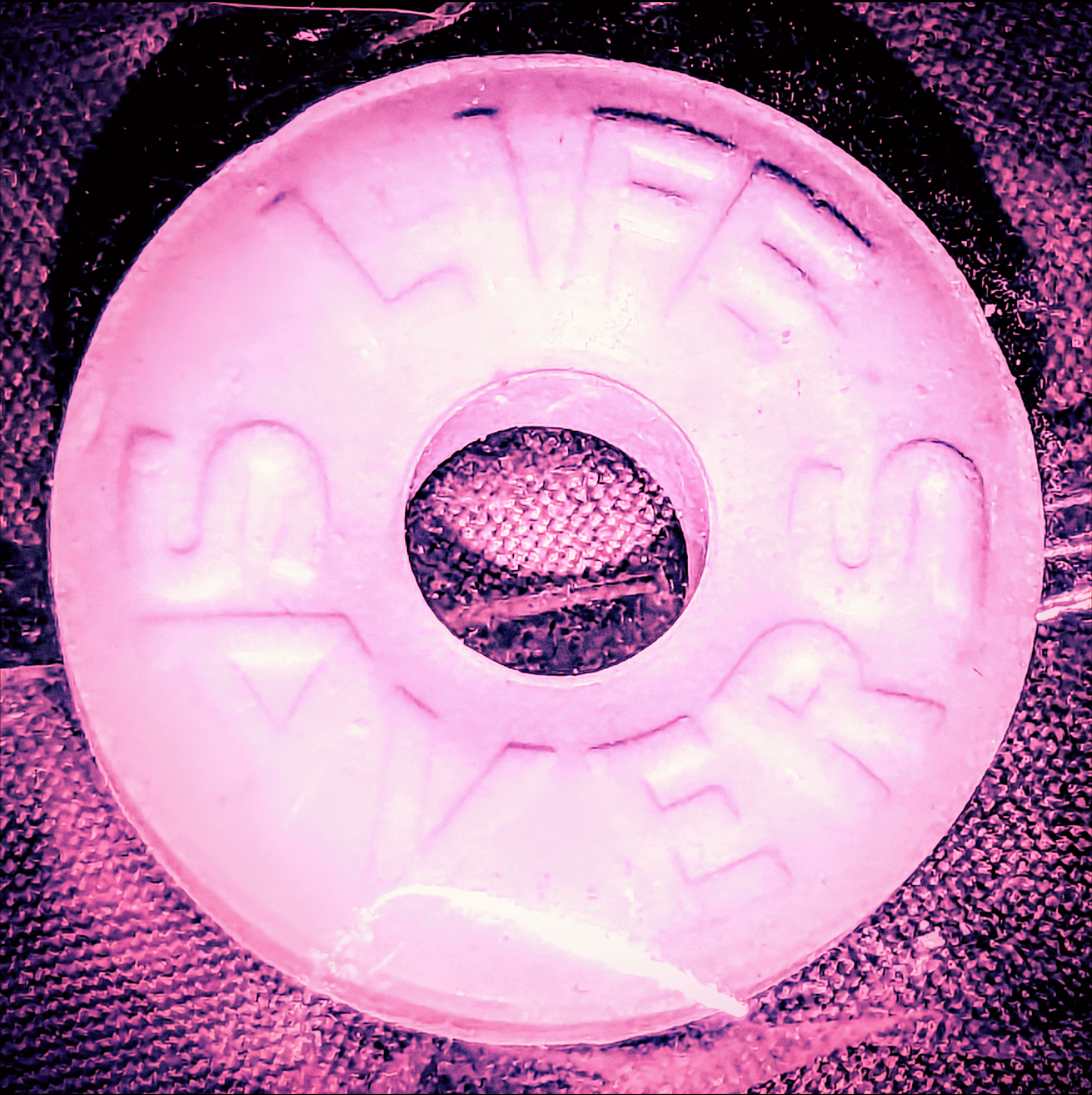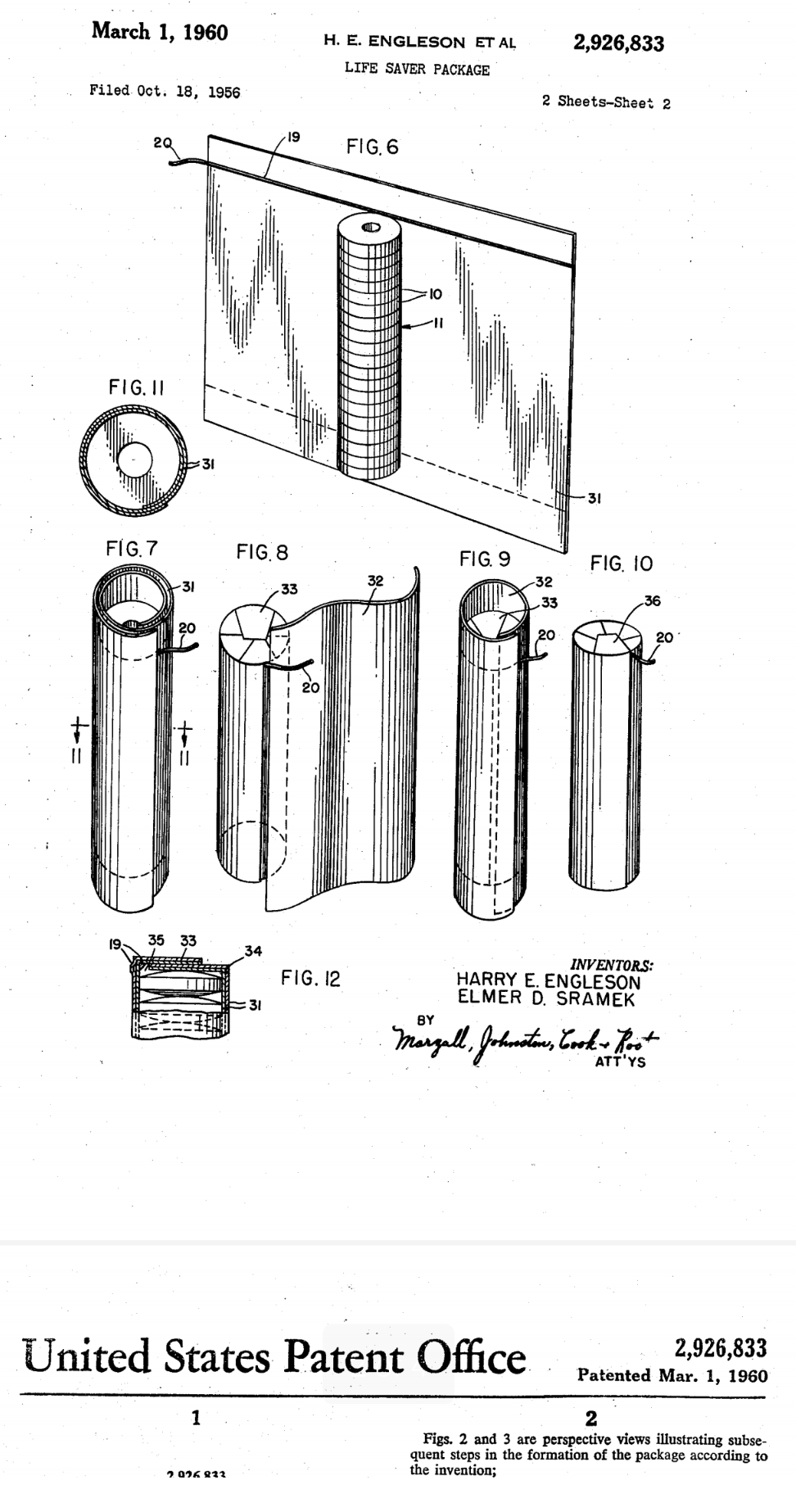Because there is such a range of repetitive information about Life Savers manufacturing, this site is going to focus on more granular information found from earlier sources. If you find any primary or secondary sources that add to or contradict this information, please let us know. There was only a somewhat limited amount of manufacturing information that has been identified from the Beech Nut corporate records.
⭕Life Savers Recipe
1912 Handmade in Ohio
1913 Handmade in both Ohio and New York
"After buying the little Ohio concern [1913], he [Edward Noble] started making Life Savers with his own hands." Source: Watertown Daily News, December 1958.
"With J. Roy Allen, Mr Noble bought the business [in 1913]... And set up the Mint Products Company, Inc. in a 1-room rented loft in Manhattan with 6 girls, a kitchen stove, and a few pots and pans." Source: Watertown Daily News, July 2, 1980. There were several differences between Crane's & Noble's Life Savers™️.
From 1913 to 1915, there was an overlapping period where Crane's Peppermint Life Savers (made in Cleveland) and Life Savers by Mint Products Co., Inc. (made in New York City) were available concurrently. This remained until a) all of the product that had previously been distributed had been sold, and b) MPCI's productions processes could feasibly handle the volume alone.
1915 Handmade in New York only
"By 1915 Noble and Allen were producing Life Savers themselves and no longer used Crane as a supplier." Source: https://case.edu/ech/articles/l/life-savers
1914 International Sales
There are two indications that Life Savers were sold internationally very early in the process. First, in ~1914, a South American order for 450,000 packages was exported (Modern, p. 95). Secondarily, a plant was opened in Ontario, Canada in 1920 or earlier (Chronicler, p. 5).
1920 new factory

Photo: Community content is available under CC-BY-SA unless otherwise noted, per https://life-savers.fandom.com/wiki/Life_Savers_Building
"The company's phenomenal success caused frequent moves until the firm opened a million-dollar factory in Port Chester in 1920." Source: Watertown Daily News, July 2, 1980.
Its "floor surfaces had apparently been sloped to create drainage ''to allow easier washing down between shifts,'' he [Ted Okie] said. In addition, transfer beams had been added in some spots to permit load-bearing columns to be removed so rail cars could be rolled into the building." (Troubled)
Recipe
Candy cannot be manufactured without ingredients...more on that in Life Savers™️: the Recipe (more or less).
1933 Machinery Patents
 Life Savers has been assertive in acquiring patents. In 1933, it defended one. The context of doing that provides a good deal of insight into how Life Savers were created at that point. The shape that is required for Life Savers is referred to as "annular," which literally means ring-shaped. The case described...
Life Savers has been assertive in acquiring patents. In 1933, it defended one. The context of doing that provides a good deal of insight into how Life Savers were created at that point. The shape that is required for Life Savers is referred to as "annular," which literally means ring-shaped. The case described...
"candy-making machines and more particularly to a machine for making annular or ringlike pieces of candy, and that it is especially intended for use in making candy from material which during manufacture is tacky, taffy-like, or pasty in consistency and hardens after a period of time."
Just to clarify, this describes what we on the site called boiled candy...the clear candies like Wild Cherry.
The following United States patents were discussed:
- No. 336,839 to Collum
- No. 819,543 to Hart was for an earlier version of a candy-making machine.
- No. 1,726,313 is Eseck C. Miller's, for a version of a machine described above.
- No. 1,755,263 is another Eseck C. Miller Candy making machine; however, Lifesavers indicated "that it not only produced only one-fifth as many annular 'Life Savers' as did the defendant's machine, but that they had such a large number of defects as to make it inoperative for commercial purposes."
In defending why the Life Savers candy machines were not replicating Miller's patent, specialist Frederick Ray explained that while Miller's machine required a blob more or less the length and width of the finished candy,
[Life Savers manufacturing instead] cuts off a "gob" of candy having no relation to the shape of the finished product. The lower wheel of [Life Savers'] machine carries a series of mould cavities into which this piece of candy is forced, each of which cavities has a pair of side dies...[B]ecause the core forms a portion of the surface of the mould in [the] machine, there are certain surface elements of this mass which are in the form of circles, but their relation to other elements in the mass has been entirely changed."
The court was convinced that there was no infringement.
Another iconic patent would include its packaging, US patent No. 2,926,833. For a lengthy list of others, see the Sources section below.
1943 Quality Control
A 1943 photo demonstrates how "women workers at the Lifesavers manufacturing plant inspect the candies for size." Source: Oil-Power Magazine, September and October 1943; courtesy of the Gouverneur Museum.
1951 Life Savers' Manufacturing Vendors (Source: Modern)
- Aluminum foil, Aluminum Co of America, Pittsburgh.
- Paper-backed aluminum foil, Milprint, Inc., Milwaukee, and Standard Rolling Mills, Inc., Brooklyn.
- Waxed paper, Nashua Gummed & Coated Paper Co., Nashua, N. H. Tear tapes, Chicago Printed String Co., Chicago.
- Labels, Wheeler-Van Label Co., Grand Rapids, Mich.
- Counter cartons, Fort Orange Paper Co., Castleton-on-Hudson, N. Y.
- Shipping cases, National Container Corp., Long Island City, N. Y.
- Mint and drop-candy packaging machines, F. B. Redington Co., Chicago.
- Carton overwrapping machines, Package Machinery Co., Springfield, Mass.
- Carton gluing and form ing machines, U. S. Automatic Box Machinery Co., Inc., Boston.
- Cellophanewrapping and sealing machine (6-roll family packs), Scandia Mfg. Co., North Arlington, N. J.
- “Selectrol” check weigher The Exact Weight Scale Co., Columbus, Ohio.
- “Packomatic” case loader, J. L. Fer guson Co., Joliet, Ill.
- Case sealers, Stand ard-Knapp, Div. of Emhart Mfg. Co., Portland, Conn.
- Counter merchandisers, Robin-Skall Display Case Co., Brooklyn.
- “Sweet Story” gift package, Robert Gair Co., Inc., New York, and National Folding Box Co., New Haven, Conn.
 1960 Packaging Patent
1960 Packaging Patent
Life Savers has been assertive in acquiring patents. One iconic one in 1960 would include its packaging, US patent #2,926,833. For a lengthy list of others, see the Sources section below.
February 1980
2.881 inches was established as the length of a Life Savers roll, according to patent application 4270956 (Justia Method).
1984 Manufacturing plant
Nabisco announced the "closing in early 1984 of our Life Savers manufacturing plant in Port Chester, New York." (Annual)
1987 Manufacturing moved from Parsippany, New Jersey to Winston-Salem, North Carolina
1996 Planters Lifesavers shuts down Winston-Salem
After poor sales, Planter's Life Savers moved the NC office back to Parsippany, New York.
2003
Per VanOchten (2013), the Holland plant ceased production in 2003.
Sources:
Annual report, 1982. Nabisco, Inc. 1982. p. n44. Retrieved from https://archive.org/details/nationalbiscuitcompanynabiscoannualreports/nabisco1983/mode/1up?q=Life+savers+candy
Brooks, Andrew, "A Troubled Port Chester Project's Second Effort," New York Times, Aug. 25, 1989. Retrieved from https://www.nytimes.com/1989/08/25/business/about-real-estate-a-troubled-port-chester-project-s-second-effort.html
"Life Saver package", retrieved from https://patents.google.com/patent/US2926833A/en
"Miller v. Life Savers," Circuit Court of Appeals, Second Circuit, 9 Jan 1933. Retrieved from https://casetext.com/case/miller-v-life-savers
"Packaging's Hall of Fame: Life Savers," Modern Packaging 1951-12: Volume 25, Issue 4. Digitized from IA1643112-05. pp. 92-98, 180-185. Retrieved from https://archive.org/details/sim_modern-packaging_1951-12_25_4/page/180/mode/1up?q=Life+savers+candy
"Patents assigned to Life savers Inc", retrieved from https://patents.justia.com/assignee/life-savers-inc
VanOchten B., "Filling a hole: Old Life Savers plant gets new lease on its industrial life," Holland Sentinel, 10 December 2013, retrieved from https://www.hollandsentinel.com/story/business/manufacturing/2013/12/10/filling-hole-old-life-savers/41591285007/
⭕⭕⭕
Life Savers™️ is a trademarked name currently owned in the US by Mars Wrigley Confectionery, having been owned and/or licensed by many previous companies, varying by country.
©️2024 to present. All rights reserved.
